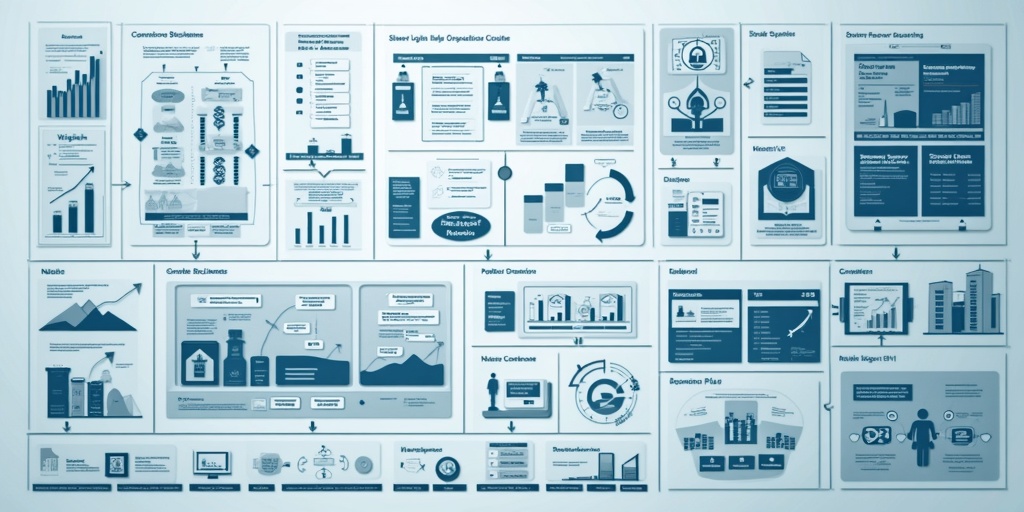The Revenue Operations Framework That Scales Service Businesses

Most service businesses operate with disconnected departments that work against each other instead of toward common revenue goals. Revenue Operations (RevOps) is the strategic alignment of sales, marketing, and customer success to drive predictable, scalable growth.
The Problem with Siloed Operations
In traditional service businesses, each department operates independently with different goals, metrics, and systems:
Marketing
- • Focuses on lead quantity
- • Measures website traffic
- • Optimizes for cost per lead
- • Limited sales feedback
Sales
- • Complains about lead quality
- • Focuses on closing deals
- • Limited customer feedback
- • Inconsistent follow-up
Operations
- • Focuses on delivery
- • Limited sales input
- • Reactive to problems
- • No growth feedback loop
This siloed approach creates friction, inefficiency, and missed opportunities. Revenue Operations eliminates these silos by creating a unified system focused on revenue growth.
The SparkBoost Labs RevOps Framework
Our Revenue Operations framework has helped service businesses achieve 300% revenue growth by aligning all revenue-generating activities. Here are the five core pillars:
Pillar 1: Unified Data and Systems
The foundation of effective RevOps is a single source of truth for all customer data. This means:
- Integrated CRM system: All customer interactions tracked in one place
- Marketing automation: Lead scoring and nurturing aligned with sales process
- Analytics platform: Real-time visibility into the entire revenue funnel
- Communication tools: Seamless handoffs between departments
Pillar 2: Aligned Metrics and Goals
Instead of department-specific metrics, RevOps focuses on shared revenue metrics:
Leading Indicators
- • Marketing Qualified Leads (MQLs)
- • Sales Qualified Leads (SQLs)
- • Pipeline velocity
- • Lead-to-customer conversion rate
Lagging Indicators
- • Monthly Recurring Revenue (MRR)
- • Customer Lifetime Value (CLV)
- • Customer Acquisition Cost (CAC)
- • Net Revenue Retention
Pillar 3: Standardized Processes
RevOps creates standardized, repeatable processes across the entire customer journey:
Lead Generation Process
Standardized lead qualification criteria and handoff procedures
Sales Process
Defined stages, exit criteria, and required activities
Onboarding Process
Smooth transition from sales to delivery team
Customer Success Process
Proactive account management and expansion opportunities
Pillar 4: Cross-Functional Communication
Regular communication ensures all teams stay aligned on revenue goals:
- Weekly RevOps meetings: Review pipeline, discuss blockers, align on priorities
- Monthly business reviews: Analyze performance against goals and adjust strategy
- Quarterly planning sessions: Set goals and allocate resources
- Real-time dashboards: Shared visibility into key metrics
Pillar 5: Continuous Optimization
RevOps is not a set-it-and-forget-it system. It requires continuous testing and optimization:
- A/B testing: Continuously test messaging, processes, and tactics
- Performance analysis: Regular deep-dives into what's working and what's not
- Process refinement: Ongoing improvements to reduce friction and increase efficiency
- Technology optimization: Regular evaluation and upgrade of tools and systems
Case Study: Professional Services Firm Transformation
A 50-person professional services firm was struggling with inconsistent growth and departmental conflicts. Here's how RevOps transformed their business:
The Challenge
- Marketing and sales blamed each other for poor results
- No visibility into pipeline or forecasting accuracy
- Inconsistent client onboarding experience
- High client churn in first 90 days
- Difficulty scaling beyond founder involvement
The RevOps Implementation
- Implemented unified CRM and marketing automation
- Created shared revenue metrics and dashboards
- Standardized lead qualification and handoff process
- Developed structured onboarding program
- Established weekly cross-functional meetings
The Results (12 months)
Implementing RevOps in Your Business
RevOps implementation should be phased to minimize disruption while maximizing impact:
Phase 1: Foundation (Months 1-2)
Audit current systems, define shared metrics, implement unified CRM
Phase 2: Process Alignment (Months 3-4)
Standardize handoff procedures, create communication cadence
Phase 3: Optimization (Months 5-6)
Implement automation, refine processes, establish testing framework
Remember: RevOps is a journey, not a destination. The goal is continuous improvement in revenue efficiency and predictability.
Ready to Implement RevOps?
Get a comprehensive RevOps assessment and implementation roadmap for your business. We'll show you exactly how to align your teams for predictable revenue growth.
Get Your Free RevOps Assessment